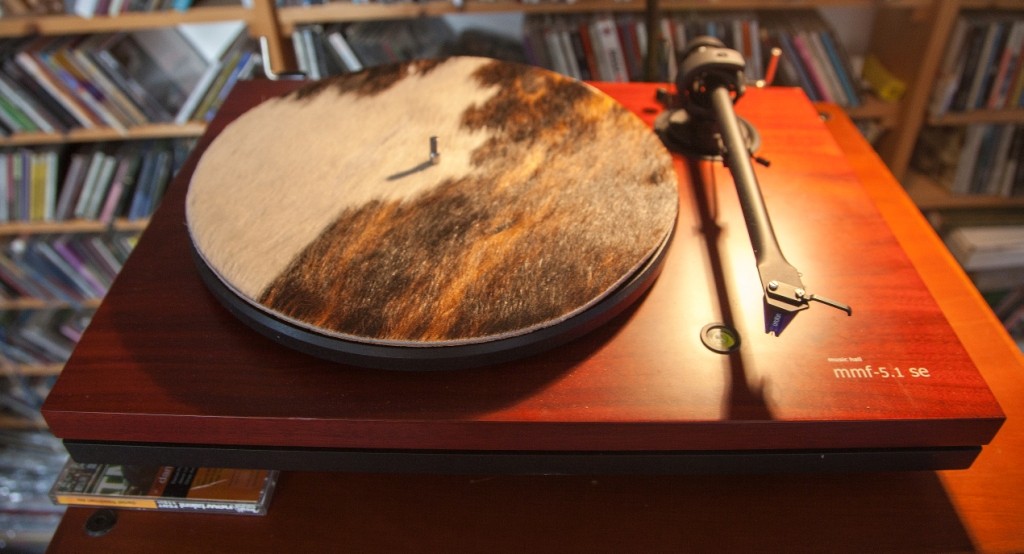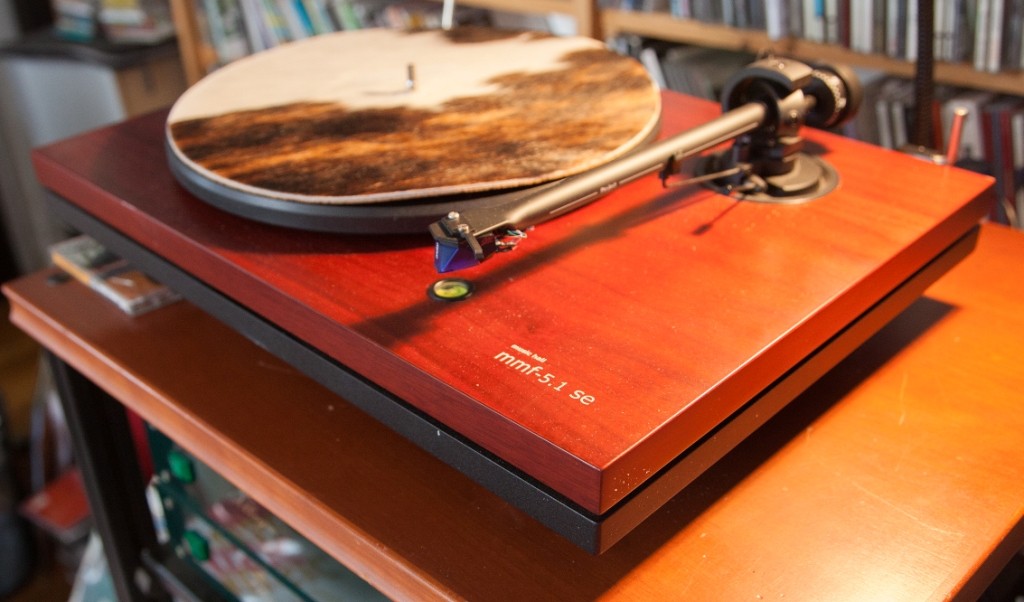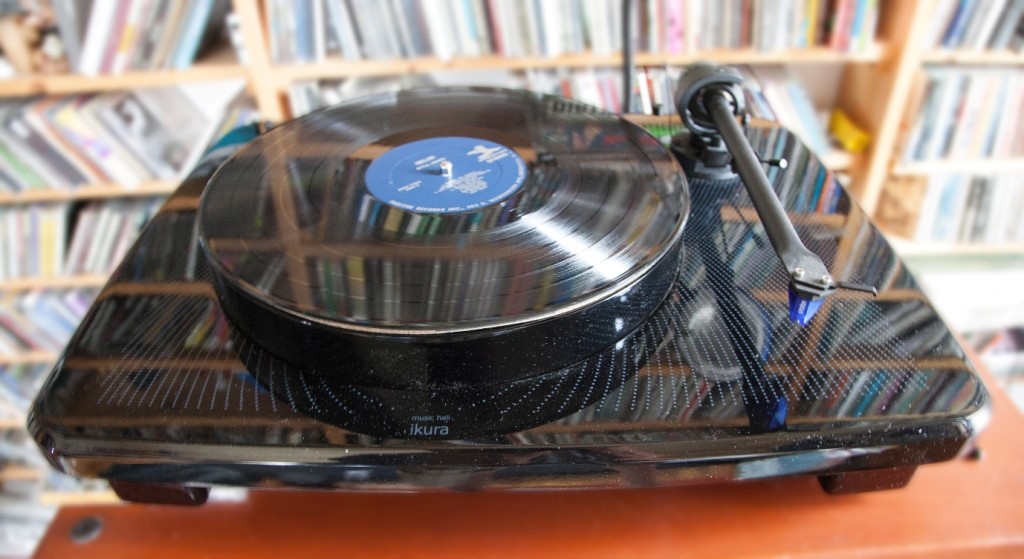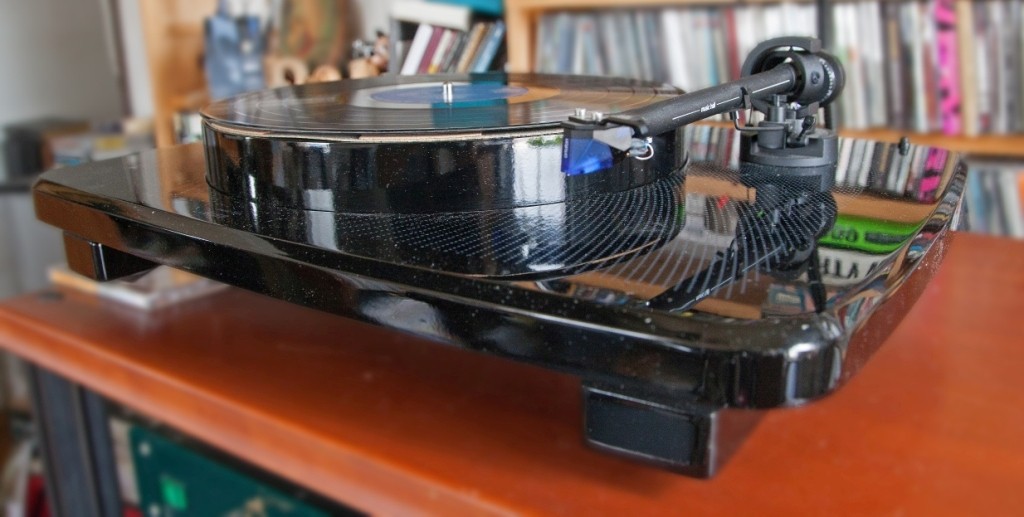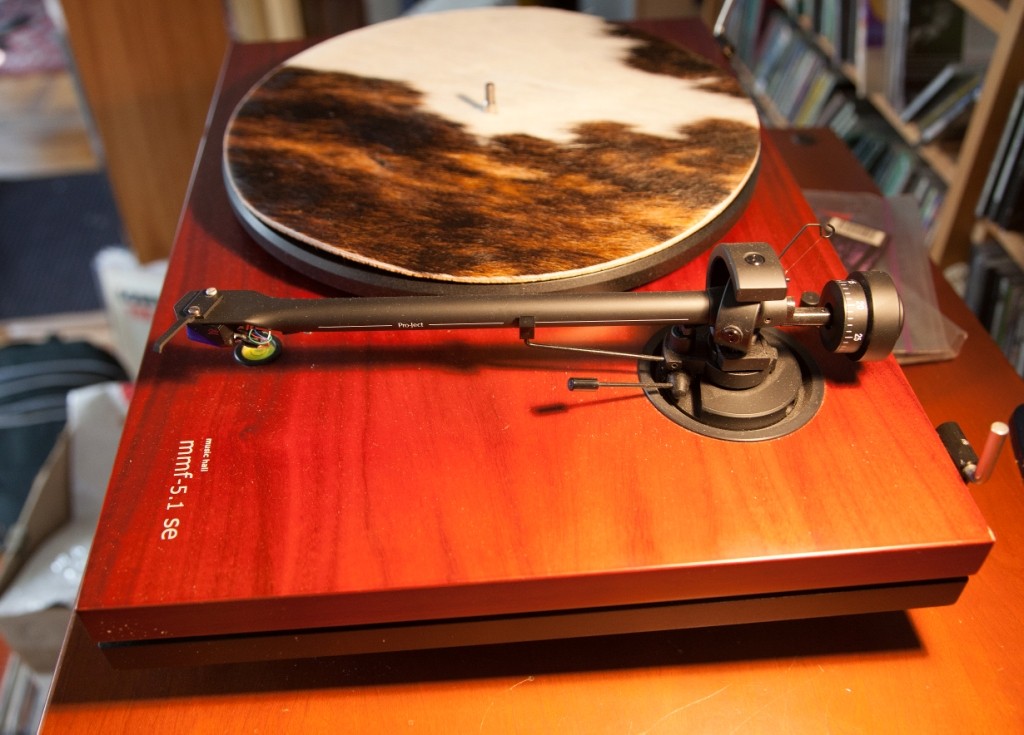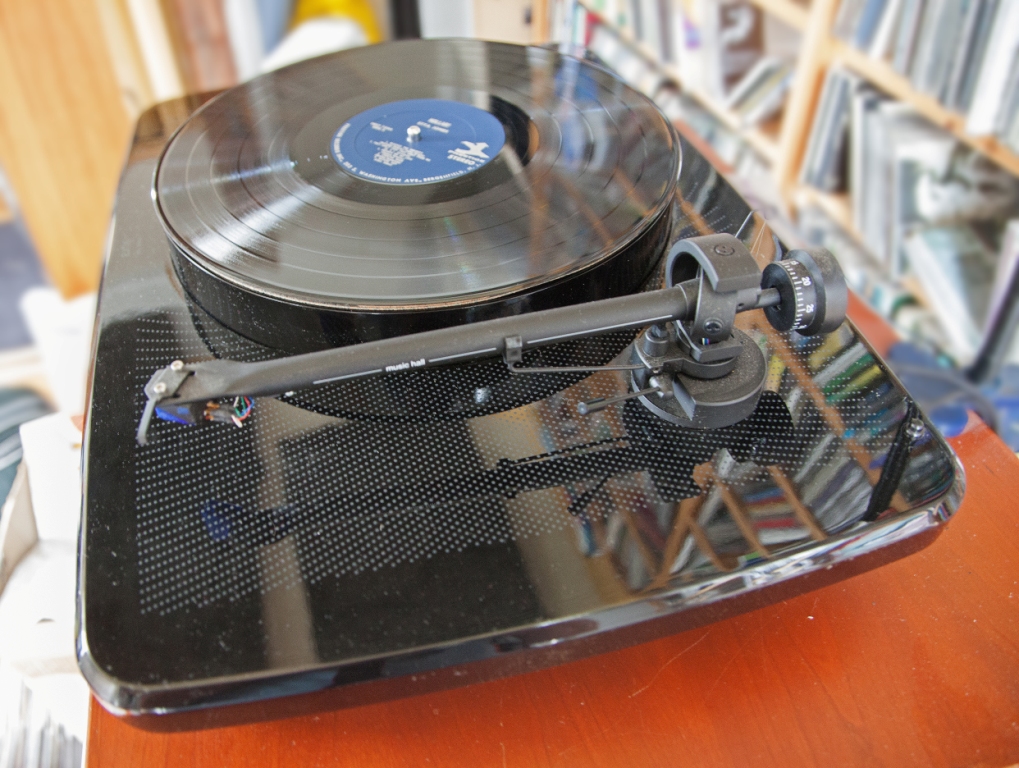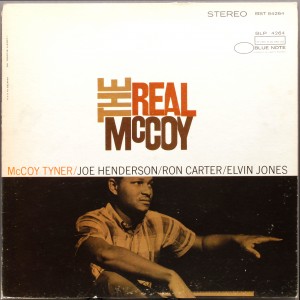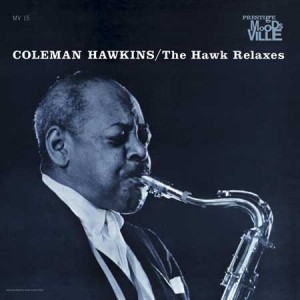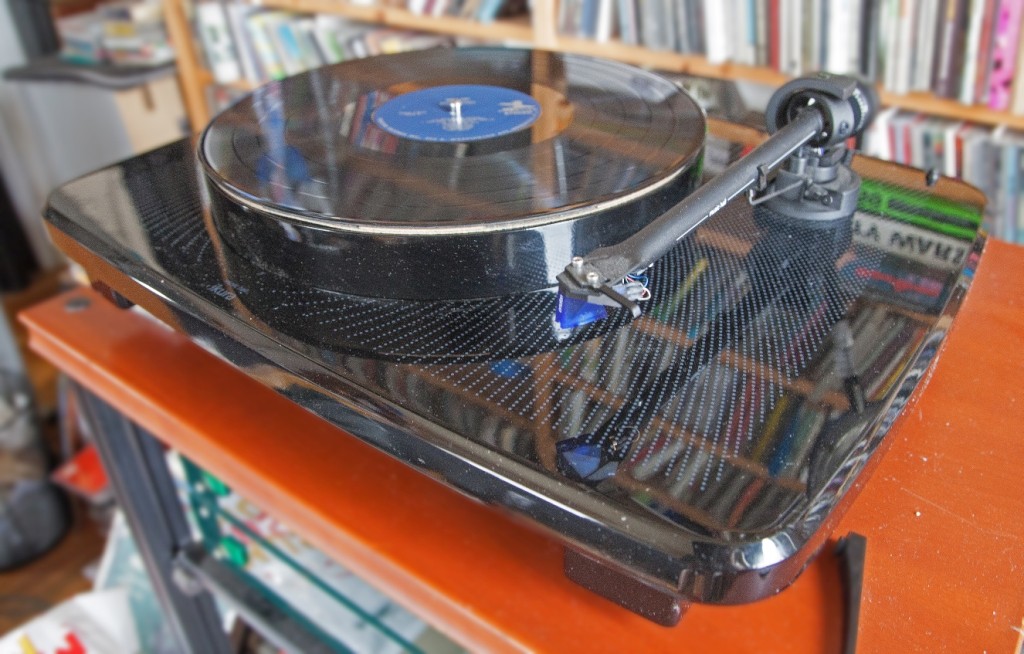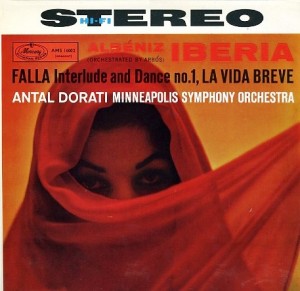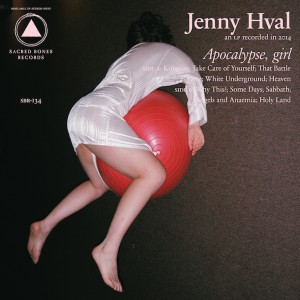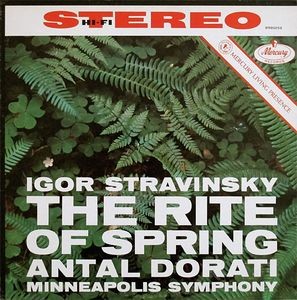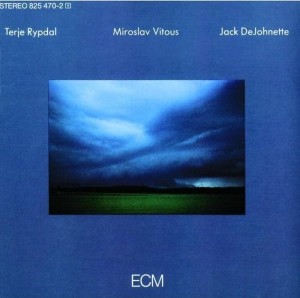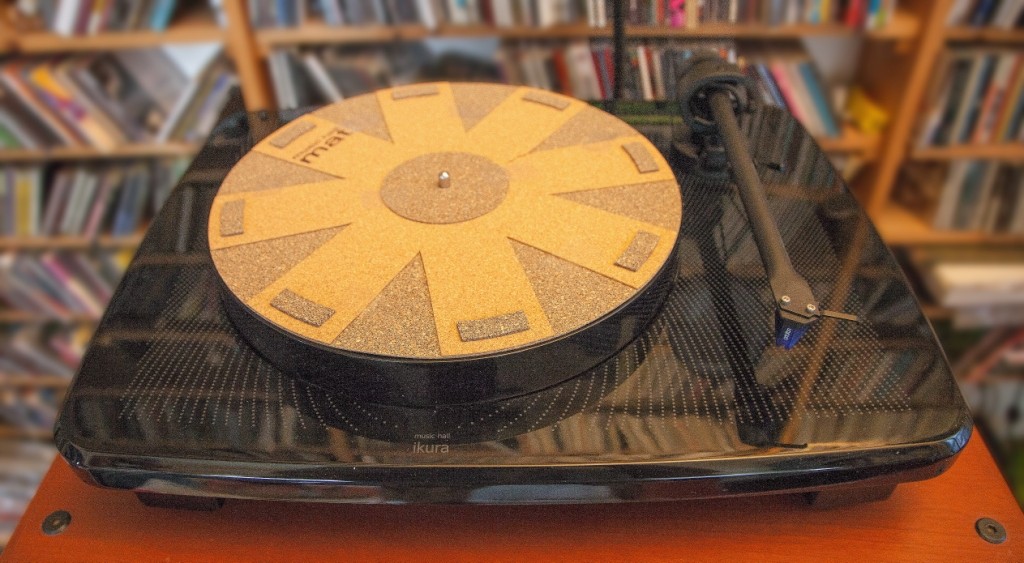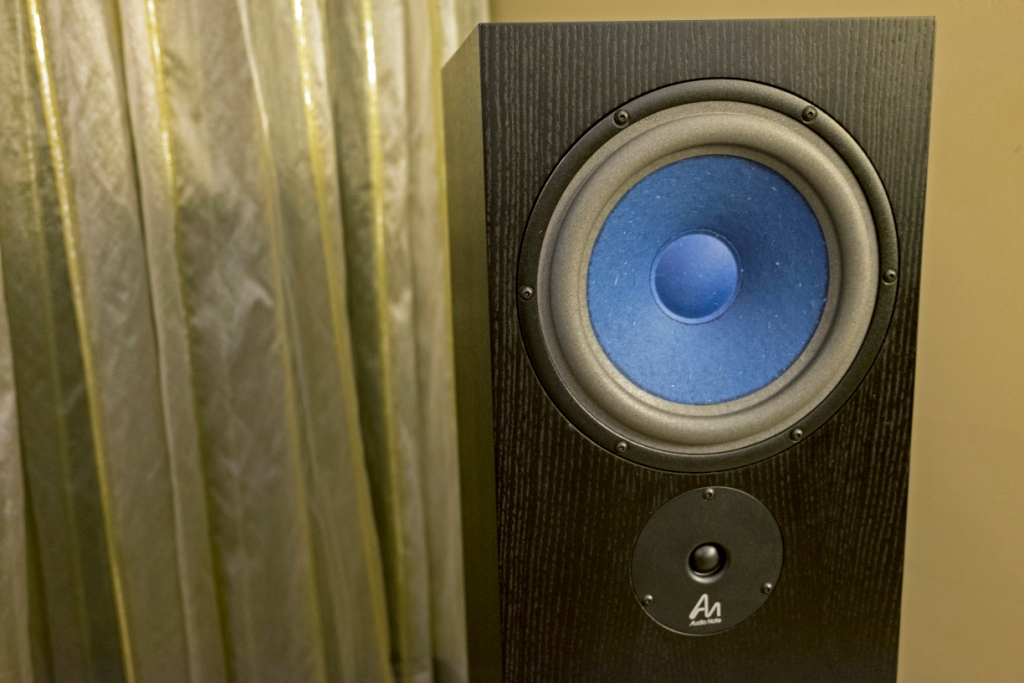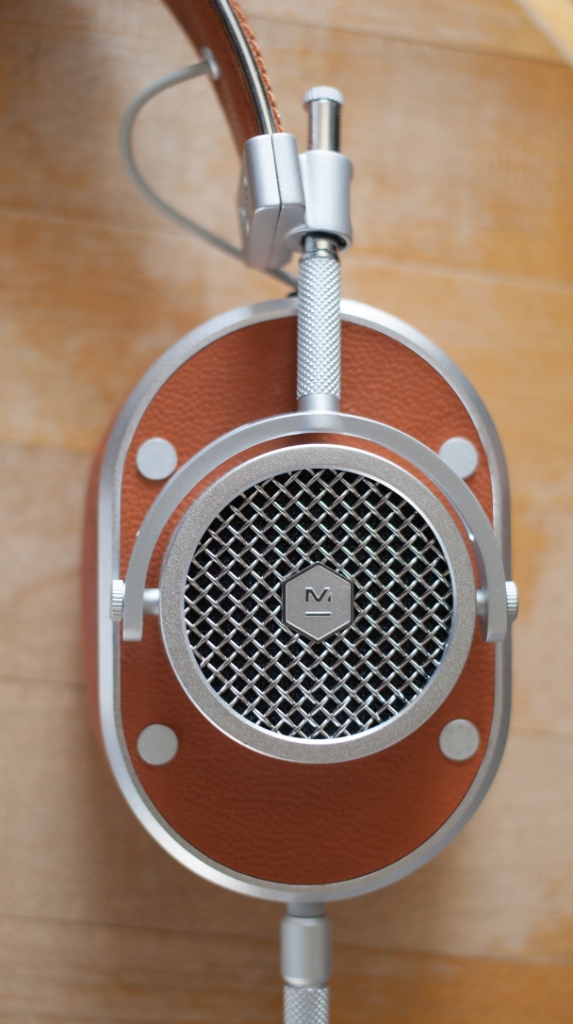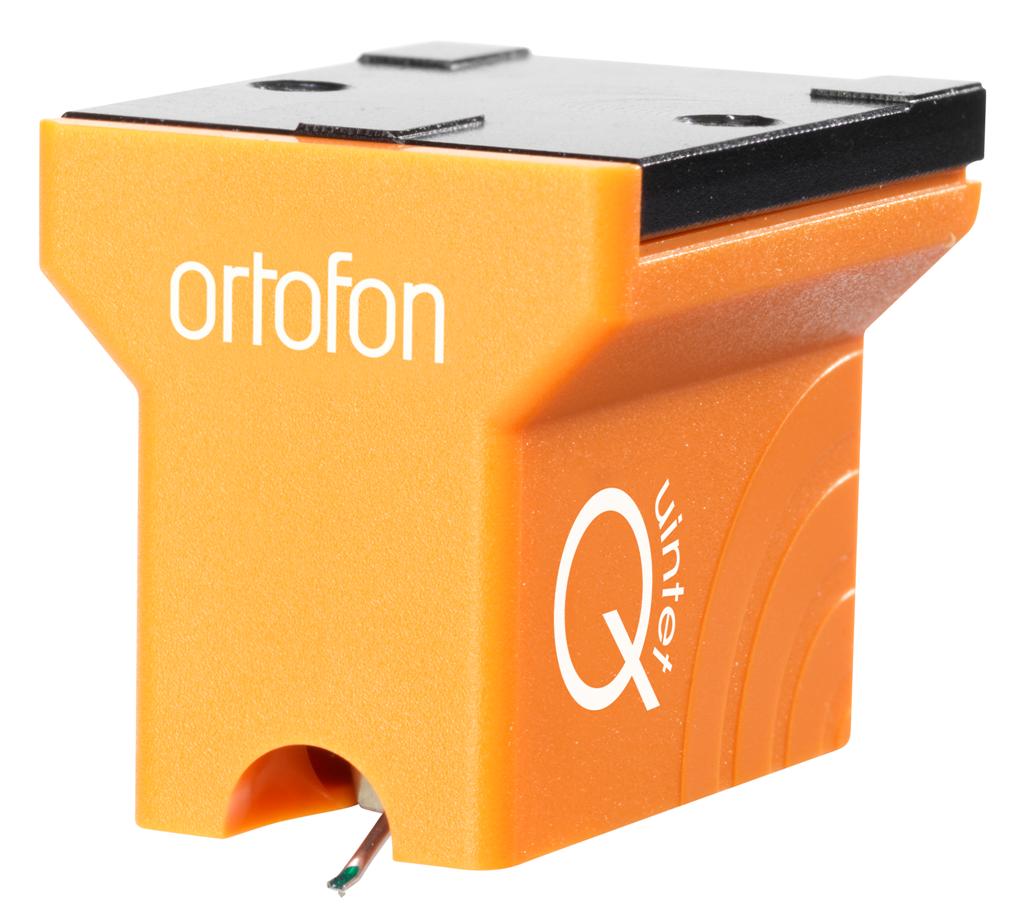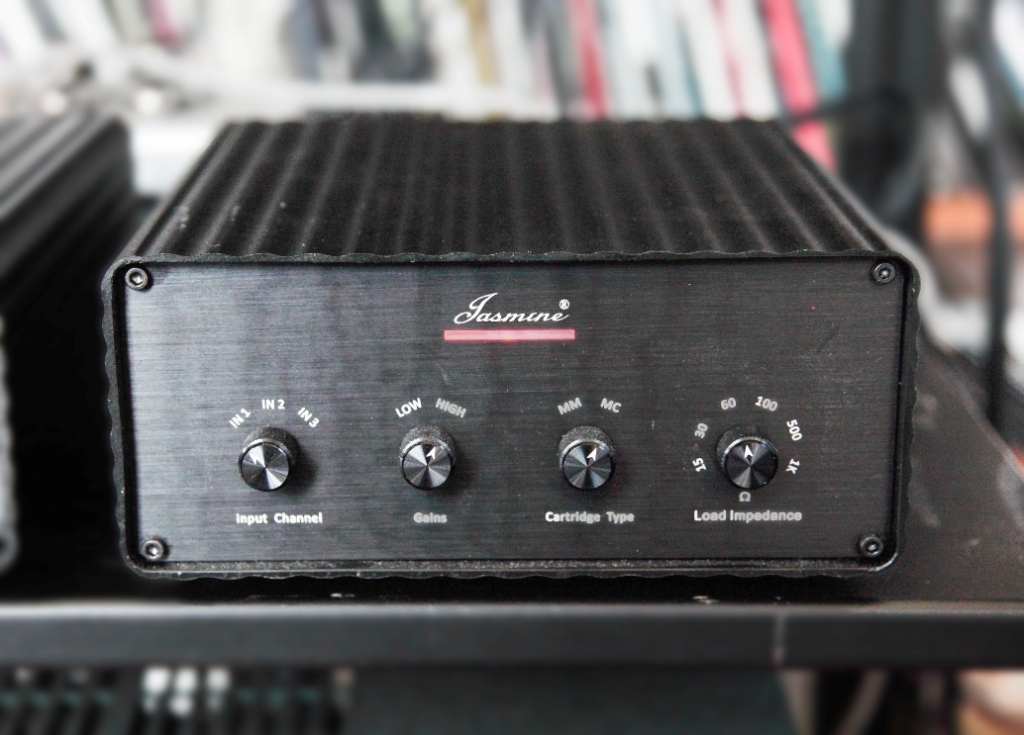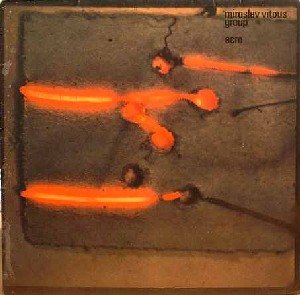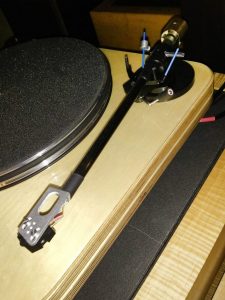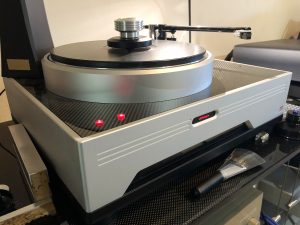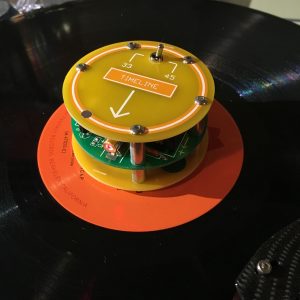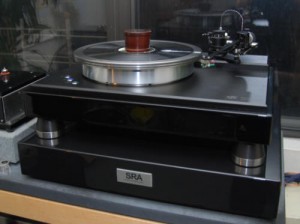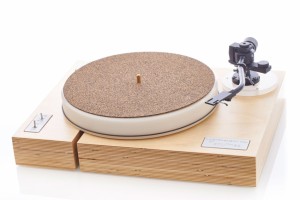Tipping the register at $1095 and $1195, respectively, the Music Hall MMF-5.1SE and recently introduced Ikura turntables share certain design and implementation features in their equally attractive frames. Both share a dual-plinth design, the same Pro-Ject 9 tonearm, same motor, a "precision stainless steel main bearing sheathed in Teflon for noise-free operation (quoting the Music Hall Audio website)," the same "high quality gold plated RCA connectors with detachable phono cable," and more.
"The Ikura is much more expensive to make," says Roy Hall. "The printing and painting and finishing is expensive. The 5.1SE is just a square piece of wood. The Ikura has to be buffed and silkscreened and has filled edges.
"The Ikura is the same two-platform [design] like the 5.1SE," Hall continues. "But the mandate for the Ikura was to make a very beautiful turntable, and not necessarily a replacement but to have something that looks really nice and distinctive, and we achieved it. It takes the technology from the 5.1SE but by making the base much lighter and with a lot of cut-outs you get a slightly better, more involved sound."
The Ikura's tallish platter (taller than is standard, to increase mass) is made from OMG! MDF.
"MDF is a great sounding platter though it doesn't have much acceptance in the market place," Hall insists. "It sounds better than, say, a metal platter. Only a few people in the world know how to design turntables. So I take tried and true technology and I tweak it. How did I tweak it? I tried it that way, I tred it this way. I do it the hard way: I listen to it and play with it. We're not going to make something ridiculous that isn't going work properly. Because we know what we're doing. When it comes to fine tuning it's all done by ear."
The 5.1SE comes stock with a Music Hall Mojo cartridge, but the Ikura greatly benefits from the Ortofon 2M Blue.
"The Ortofon 2M Blue is a very good sounding cartridge and it's within the budget," Hall says. "We are going to use the 2M more in the future as we modify the range. The 2M Red is a piece of shit. The 2M Blue is an amazing value. Again, it's about listening. We're always evolving product."
The Music Hall MMF-5.1SE is a turntable your gramps could love. That its "real rosenut veneer top plinth renders a classic look to a sophisticated design" is true enough. Spinning Vivaldi, Haydn, Frank Sinatra, and the Swingle Singers on the 5.1SE would be all in a good night's fun, and don't forget the martini. I'm taking the Mickey—I own the 5.1SE and greatly enjoy its ability to make serious music with anything I put to it, from Bjork and The Haxan Cloak to greasy jazz organist Shirley Scott, the country-fried jazz of Ornette Coleman and outside-blowing John Coltrane as well as Wagner, Stravinsky, Bartok, Antal Dorati, and Miles Davis.
The Ikura, on the other hand, has a mid 20th Century modern appeal that is all space age "wow!" factor. And it's hipster-friendly. Its contoured, Corvette worthy looks are only skin deep but nonetheless stunning. Are all those curves and sleek angles from the minds of Music Hall Audio's Roy Hall and Leland Leard? Nope!
"Music Hall collaborated with an outside industrial design firm to develop [the Ikura]," states the website. " The foundation of Ikura's design remains the unique two-piece split-plinth design originated by Music Hall. The final product is the result of a dynamic design partnership between Doing & Done, headed by designer James Kyroudis, and Music Hall."
The outward spiraling, pin-like permutations of Ikura's top plinth and its rounded edges set the imagination afire, reminding me of one of those sci-fi movies (Minority Report anyone?) where globe savers spin blueprint-like plates in mid-air, exchanging a simpleton's computer monitor for airborne info juggled to their android heart's content. Available in black or white, the Ikura looks ready to jettison this mortal coil at any moment, the spinning spirals giving it a lighter-than-air appearance.
The Music Hall MMF-5.1SE comes stock with the $500 Music Hall Mojo MM cartridge (which I found rather brash and shallow sounding); the Ikura arrived with the extremely able Ortofon 2M Blue MM cartridge, an exceptional cartridge worth more than its $225 price tag. The 5.1SE's motor is asynchronous; the Ikura, DC synchronous.
There are further similarities between these two turntables should you delve deeply into Music Hall Audio's online product literature, but the most surprising likeness is the price—only a scant C-note ($100 for you squares) between the two. So are we to choose between the two based on looks alone? The 5.1SE for those who favor classic design and the Ikura for those more obssessed with visual pizzazz? Wondering that myself, I requested an Ikura review sample from Roy Hall and Leland Leard, and hoped they'd assume I would compare the loaner with my in-house product.
The table in my main rig is the seriously overperforming Kuzma Stabi/Stogi "pipe bomb," currently outfitted with an Ortofon Quintet Bronze cart (in for review). I've sold off most of my secondary rig but retain the Music Hall MMF 5.1SE. Exchanging the Music Hall for the Kuzma, I wasn't surprised that images lacked the solid heft, incredible dynamics, and tonal splendor of the five-times more expensive Slovenian turntable. But I'd also forgotten how great the little 5.1SE sounds on its own merit. This is an incredibly rhythmical and dynamic turntable, those qualities being perhaps its most outstanding traits. It can sound little thin and lack absolute power and soundstage gravitas compared to some more expensive tables, but for 1K it makes tremendous music and had me in its throes as soon as I fired it up. "No flies on frank" as we used to say.
For comparison purposes, I used the Ortofon 2M Blue cartridge on both tables, in the same position in my listening setup using the same interconnects, and I closely matched volume levels. I even used a rather crap Blue Note Records DJ mat to square things off. Records used included McCoy Tyner's The Real McCoy (mid-70s era Blue Note Liberty), Bjork's Homogenic (One Little Indian), Terje Rypdal/Jack DeJohnette/Miroslav Vitous (ECM), Igor Stravinsky The Rite of Spring Antal Dorati & Minneapolis Symphony (Mercury Presence), Jenny Hval's Apocalypse, Girl (Sacred Bones), Ibeniz-Arbos Iberia Antal Dorati Minneapolis Symphony Orchestra (Mercury Presence), The Rare Wagner Marek Janowski London Symphony Orchestra (British EMI), and Coleman Hawkins' The Hawk Relaxes (Prestige MoodsVille).
5.1SE meets Ikura
McCoy Tyner The Real McCoy
Not a great start. The 5.1SE translated this powerful Rudy Van Gelder effort into a thin, weak, smallish affair offering lightweight bass. Popping good dynamics, however.
The Ikura offered similar tonality yet with greater drive from Ron Carter's upright bass, a more expansive soundstage, and greater power and texture overall. It matched the 5.1 for pure dynamics. What it couldn't fix was the horrible recording of Elvin Jones' cymbals; when he bashes madly the cymbals go all spazzy and whizzy, Van Gelder obviously didn't allow for Elvin's tremendous power here, which is bizarre considering how many times Van Gelder recorded Elvin Jones. The meters are obviously in the red, Elvin's cymbals phasing uncontrollably.
Coleman Hawkins' The Hawk Relaxes
Much better 5.1SE! Here, Hawk's LP had warmer, larger, and more prominent bass notes befitting this classic Van Gelder mix. Though saxophone and piano sounded a bit distant, bass notes were nicely suspended and brushed snare drum was spacious and dynamic. Though soft, upright bass notes plonked low and delicious, while Kenny Burrell's liquid sounding guitar swung with exceptional pace.
The Hawk Relaxes' soundstage was similar, but the Ikura's rendering of acoustic bass notes went lower, sounded rounder and were generally more fleshed out. With all things more natural sounding through the Ikura, dynamics were not as obvious, but certainly in evidence. Overall, the Ikura provided greater flow and expanse of images, front to back, though Hawk's sax was still a mite distant in the mix.
The Rare Wagner Marek Janowski
Cranking up into Wagnerian land, the 5.1SE expressed excellent dynamics, spinning notes fast and furious. Blisteringly good treble transients, booming low end with solid warmth, and excellent macro-dynamics overall. When things got busy the 5.1SE lost the plot, expressing the LP's incredible dynamic range in sadly smeared notes, particularly in massed strings that turned into sugary syrup. Treble could be coarse when pushed hard, and dynamic orchestral sections turned muddy when musical tension hit its peak. Though finesse isn't the 5.1SE's strong suite, its top-notch dynamics, from quaking bass drums to keening brass,kept my head spinning.
The leaps in dynamic range were just as startling though smoother through the Ikura, and music generally sounded more coherent and unified. Dynamics remained startling, yet the coarseness was gone. Nothing was lost or muddled, there were no hardening of treble transients. Bass drums still boomed like the 1812 yet within a better sorted out soundstage.
Ibeniz-Arbos Iberia Antal Dorati Minneapolis Symphony Orchestra
Another extremely dynamic recording, Iberia presented a wide soundstage which the 5.1 amply delivered, but the bugaboos of coarse treble transients (strings primarily) and smearing of inner detail in massed orchestral sections sounded a theme. Though clean and revealing of subtleties, brass and strings through the 5.1SE became hard when forced, though cracking bass drum accents were delivered with superior speed and punch.
One thing held true for every record played on the Ikura: everything became somehow louder. I don't understand this as I matched volume levels and used the same cartridge. Anyway, Iberia now sounded smoother and teemed with extra detail and greaterf nuance, and in a seemingly broader soundstage than with the 5.1SE. The Ikura consistently created a beautiful, expansive soundstage in league with turntables costing twice as much. The strident strings were still evident, but less so. And in the piece's dramatic thrusts, punches and exclaimation points, nothing was muddied or lost in the orchestral swirl. Excellent!
Jenny Hval's Apocalypse, Girl
A Norwegian singer with a wild imagination and a deliciously dirty mouth, Jenny Hval is also a sonic adventurer. Teaming up with noise artist and producer Lasse Marhaug, Hall produces an album of eerie womb-like synth tones and orchestral strings depicted as frightened kittens, all circling her glorious multi-octave range vocals. Recorded to reveal every sensuous whisper and scream of Hval's often outrageous vocal delivery, Apocalypse, Girl is an oddball feast for the senses. The 5.1SE had no problem creating Apocalypse, Girl's warm if not lush tones and Hval's humming, turbulent vocals, the album's cavernous soundstage somewhat flattened owing to the music's lo-fi production, not the 5.1's lack thereof.
The Ikura didn't change the overall demeanor of Hval's music, and her voice was conveyed with similar tactileness, but synthesizers were better sorted with greater resolution. And again, the Ikura's delicious overall presentation changed the game in its favor.
Igor Stravinsky The Rite of Spring Antal Dorati & Minneapolis Symphony
Once again, the 5.1SE's sonic theme of superior dynamics beautifully rendered appeared, joined to occasionally hardened transients and instrumental surges that though exciting, took my head off in hairpin turns. The 5.1SE lost the clue during the orchestra's outrageous swarm of sounds, only to suddenly reveal a dense pizzicato section with grace and natural flow. Never predictable, the 5.1SE revealed surprises at every turn, from its consistently accurate tonal rendering of instruments to its consummate ease at relaying all the complex dynamics of this fantastic piece of orchestral innovation.
My Ikura listening notes say "greater sense of wholeness, instrumental lines easier to follow and decipher, somehow mellower, yet smoother overall and more pronounced. And better micro-dynamics."
Terje Rypdal/ Miroslav Vitous/Jack DeJohnette
An LP that reveals surprises every time I play it, this is early'70s ECM at its finest. An improvisational masterpiece, the trio of Rypdal, DeJohnette and Vitous plays as one, as if floating on a cloud of shimmering guitar reverb and amazingly elastic and soulful free drumming. Here, the sound was never forward or hard but instruments were rendered smaller in stature than is usually heard in my system. Drums sounded beautiful, acoustic bass profoundly warm and woody, and again, the music was extremely rhythmic and dynamic. The 5.1SE doesn't do texture; and instruments never sounded particulalry warw. Part of this may be due to my Snell J/IIs, which are accurate if tonally dry speakers, unlike my DeVore O/93s which are accurate and warm. So while coarseness increased via the Snells, rhythmic cues and breathtaking dynamics remained—the 5.1SE's top traits.
Immediately through the Ikura, I hear rounder, warmer drum tone, more depth to the drums and improved cymbal decay. More overall depth and largess in the soundstage. Greater delicacy and detail retreival of Vitous' bowed bass notes. A bigger soundstage overall with better layering of instruments. When Rypdal and Vitous seemingly duel, their instruments sound like twining spirals rising through the fog. Such a wonderful recording of this brilliant jazz trio.
Bjork Homogenic
Icelandic elfin queen Bjork favors oceanic synth bass and stirring strings meshed with electronic beats. Though her recent albums have hit a dead-end with this formula, Homogenic is Bjork still in throes of beautiful creativity.
The 5.1SE delivered the throbbing bass notes with ease, accuracy and muscle. I want to use the word "phat." Okay, I did! Though strings sounded coarse at times, synth tones helped to soften that effect, with Bjork's stratospheric vocals riding above like Wagner collaborating with a demonic girl's choir. Electronic snare drums hammered the senses; buzzing strings swarmed overhead like wasps; Bjork spewed vocal caterwaul like an angel about to flee to the dark side.
The Ikura rendered Homogenic as a tighter, grittier, warmer, edgier, and more purposeful experience. Vocals beacme larger in the mix, and programmed drums inhabitated a more unique space providing greater slam. That hammering snare drum took on more of a buzzing and harmonious coo. Bjork still raged, and I better felt her angst.
The Wrap
Are the Music Hall MMF-5.1SE and Ikura turntables dramatically different? In some ways, yes, in some ways, no. The 5.1SE's single most impressive quality is its ability to express a wide dynamic range, to capture equally the vast shifts in micro- and macro-detail of a symphony orchestra and a swinging jazz quartet, with attention paid to detail, color, and PRaT. The 5.1SE created decent tonal color, though at times it could render string textures rather coarsely while also muddying complex orchestral passages. But the 5.1SE is largely an overachiever, and consistently surprises with its fleet-footed litheness and its potent, muscular ways.
The Ikura builds on 5.1SE's traits, adding a more dramatic and better developed soundstage, increased tonal colors, and excellent transparency while losing none of the dynamic splendor of the 5.1SE. The Ikura sounded more relaxed yet still dynamic, and created a larger, serioushy textured soundstage with gobs of detail and transparency to the musical source. Expansiveness is the Ikura's most resounding trait, reflected in its layered, wide, deep soundstage that illustrated everything from Terje Rypdal's swirling guitar effects to the orchestral density of The Rite of Spring. The Ikura also created a tactile sense of romance, of flesh and blood and atmosphere that quickly won me over.
There is a house sound to the Music Hall tables: faithfulness to the recorded event without editorializing. Two terrific tables, two worthy contenders in the $1000 turntable range.
MATS ON THE MAT!
Music Hall Mats: Mooo Mat or Aztec Blue Cork Record Mat?
Gracious as they are, after I purchased the original Music Hall cork mat, then a Mooo Mat, Leland and Roy sent the Aztec Blue Cork Record Mat, I guess so that the other two wouldn't feel lonely when not spinning wax! Let's see how they stack up.
Mooo Mat, $74.99: "A FUN, HIP TURNTABLE MAT MADE OF REAL COWHIDE. The Mooo mat is a piece of cowhide bonded to a piece of cork. The dissimilar materials do a terrific job of canceling out vibration, and the cowhide lifts and decouples the record from the platter. A wonderfully novel idea, each mat is as unique as the cow it came from. The mooo mat makes a great tweak and a cool fashion accessory for your'table." – Music Hall Audio
Aztec Blue Cork Record Mat, $89.99: "The outer pieces of cork that surround the outside of the mat lift and support the record while floating it above and decoupling it from the platter. This lowers record vibration and reduces acoustic feedback. Stylus tracking is improved and record wear reduced. The cork material sucks up unwanted vibrations and is naturally non-static and non-adhesive making it completely safe for all platter types and all records. Cork also grips the record better than the usual felt-type materials so there is less record slippage and fewer timing errors." – Turntable Lab
To evaluate the two mats I removed the Blue Note mat from the Ikura, and replaced it with the Aztec Blue Cork Record Mat, then cued up the Terje Rypdal/ Miroslav Vitous/Jack DeJohnette LP one more time. Via the Aztec Blue, the ECM disc tightened up considerably, with a marginally wider soundstage, greater air and better overall spaciousness. When DeJohnette's bass drum entered it was less bomb-like, and more singing in tone. There was greater tactileness, more sound of the drum head's cow hide you might say. Really, a wonderful improvement over the dead, toneless, dark-sounding felt Blue Note mat.
For fun, I placed jazz singer Etta Jones 1963 Prestige LP, Hollar! on the Aztec. Etta's voice and piano trio was clean, with good vocal decay. Again, there was great tone-fullness. Excellent decay on vocals and cymbals. And the upright was sweetly low and lowdown!
Playing Hollar! on the Mooo Mat the music became somehow meatier, yet darker and fuller overall. But it lost the previous brilliance, shimmer and decay of the Aztec mat. Do you go with "fuller, darker, and meatier" or more brilliant, tone-ful and rhythmic? As in everything audio, synergy is key.
Music Hall MMF-5.1SE turntable, retail $1095
Music Hall Ikura turntable, retail $1195
Music Hall Mooo Mat, retail $74.99
Music Hall Aztec Blue Cork Record Mat, retail $89.99




